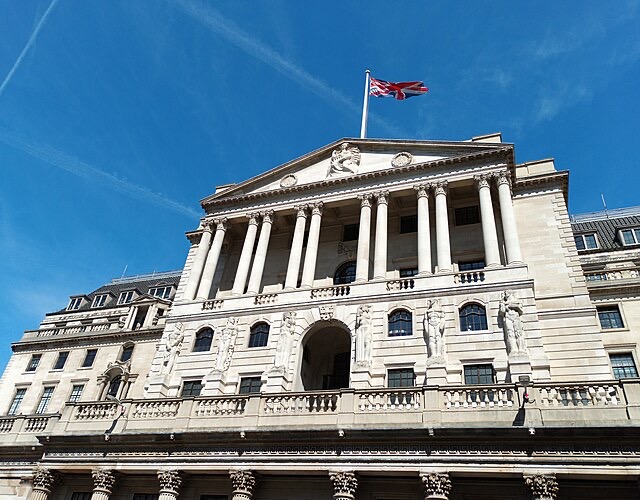The Bank of England has officially cut its base interest rate to 4.25%, a move that’s already being celebrated as a major win for UK homeowners. After months of speculation and pressure to stimulate the economy, the central bank made its long-anticipated decision—offering immediate relief to borrowers, especially those on variable and tracker mortgages. But the impact of this move goes beyond just reduced monthly payments. From invigorating the housing market to pushing savers to seek better returns elsewhere, the ripple effects are already being felt across the financial landscape.
Why the Bank of England Cut Interest Rates
This wasn’t a decision made in a vacuum. Several critical indicators led the Bank of England to act decisively, lowering the rate from 4.5% to 4.25%.
The Role of Inflation in the Rate Cut
Inflation, while recently showing signs of cooling, remains a top concern. The bank has been walking a tightrope—balancing the need to cool inflation without stalling economic growth. The latest Consumer Price Index (CPI) numbers revealed a slower-than-expected pace, giving the Bank enough breathing room to cut rates without fear of igniting a fresh inflationary spiral.
Other Economic Factors
Beyond inflation, UK GDP growth has been sluggish, bordering on contraction in some quarters. Consumer spending has dipped, and business investment has cooled off amidst ongoing global uncertainty and domestic financial pressures. Unemployment, while still relatively low, has shown minor signs of upward movement, prompting policymakers to take preemptive action to support the economy.
What the 4.25% Interest Rate Means for Homeowners
Lower rates are music to the ears of homeowners—especially those already struggling with high monthly repayments following previous rate hikes.
Mortgage Types Affected Most
- Tracker Mortgages: Since these are directly linked to the base rate, homeowners will see immediate drops in their monthly payments.
- Variable-Rate Mortgages: These could see reductions as banks adjust their rates downward in response.
- Fixed-Rate Mortgages: While current terms won’t change, this move opens the door for better refinancing deals when those terms expire.
Opportunities for Refinancing
Refinancing is now on the table for thousands of UK homeowners. Those who locked into higher fixed-rate deals last year can now start hunting for better terms—especially as lenders begin to roll out more competitive products in light of the base rate cut.
Broader Implications for the Housing Market
This rate drop is poised to reenergize the property market, which had been cooling off under the weight of rising borrowing costs.
Surge in Buyer Interest
Estate agents are already reporting a spike in inquiries. First-time buyers, long priced out due to high borrowing costs, are now sensing an opportunity to finally step onto the ladder. Lower mortgage payments mean more people qualify for home loans, which could drive competition in key markets.
Mortgage Approvals on the Rise
Banks are expected to ease lending criteria slightly and approve more loans now that the risk profile has improved. With more people eligible and willing to buy, property transactions could rise sharply in the coming months.
The Flip Side – Impact on Savers
Of course, what’s good for borrowers isn’t always good for savers.
Banks’ Response to Lower Rates
With the base rate falling, banks are likely to reduce the interest offered on savings accounts. While many had hoped for improved returns following last year’s hikes, the reversal is prompting savers to consider alternatives like stocks, bonds, and ISAs that can outpace inflation.
Market and Financial Reactions
Financial markets responded swiftly to the news. The FTSE 100 posted modest gains, buoyed by real estate and construction stocks.
Confidence in the Housing Sector
Property developers and estate firms welcomed the cut. With housing demand poised to rebound, many are optimistic about a strong second half of the year.
What Economists and Analysts Say
Expert opinions are mixed. Some praise the move as necessary, while others caution it might be premature.
Is This the Start of a Rate-Cutting Cycle?
There’s increasing speculation that this might not be the last cut of the year. With economic challenges still present, further reductions could be on the horizon if inflation continues its downward trend.
Tips for Homeowners and Buyers
- Review your mortgage terms now—especially if you’re on a tracker or near the end of a fixed deal.
- Compare refinancing options. Use comparison tools to find new, lower-rate offers.
- First-time buyer? This could be your window. Rates like these won’t last forever.
- Investors: Now’s the time to re-evaluate property portfolios and prepare for possible market resurgence.
Conclusion
The Bank of England’s decision to reduce the base interest rate to 4.25% is more than just a headline—it’s a turning point. For homeowners, it means real savings. For buyers, it’s a new opportunity. And for the broader economy, it might just be the spark needed to reignite growth. Whether you’re thinking of buying, selling, or saving—now is the time to reassess your strategy.
FAQs
- What does the 4.25% rate mean for my mortgage?
If you’re on a tracker, your payments will drop. Variable rates may also go down, and fixed-rate holders can expect better deals when refinancing. - Will house prices go up now?
Likely yes, as more buyers re-enter the market and competition heats up. - Is it still worth saving in a bank?
Bank savings will offer lower returns. You might want to look into stocks, bonds, or ISAs for better performance. - Can I remortgage immediately to benefit?
Yes—especially if your fixed term is ending or you’re on a variable rate. Compare offers now. - Will interest rates drop again this year?
It’s possible. If inflation continues to ease and growth stays weak, further cuts may be on the table.



